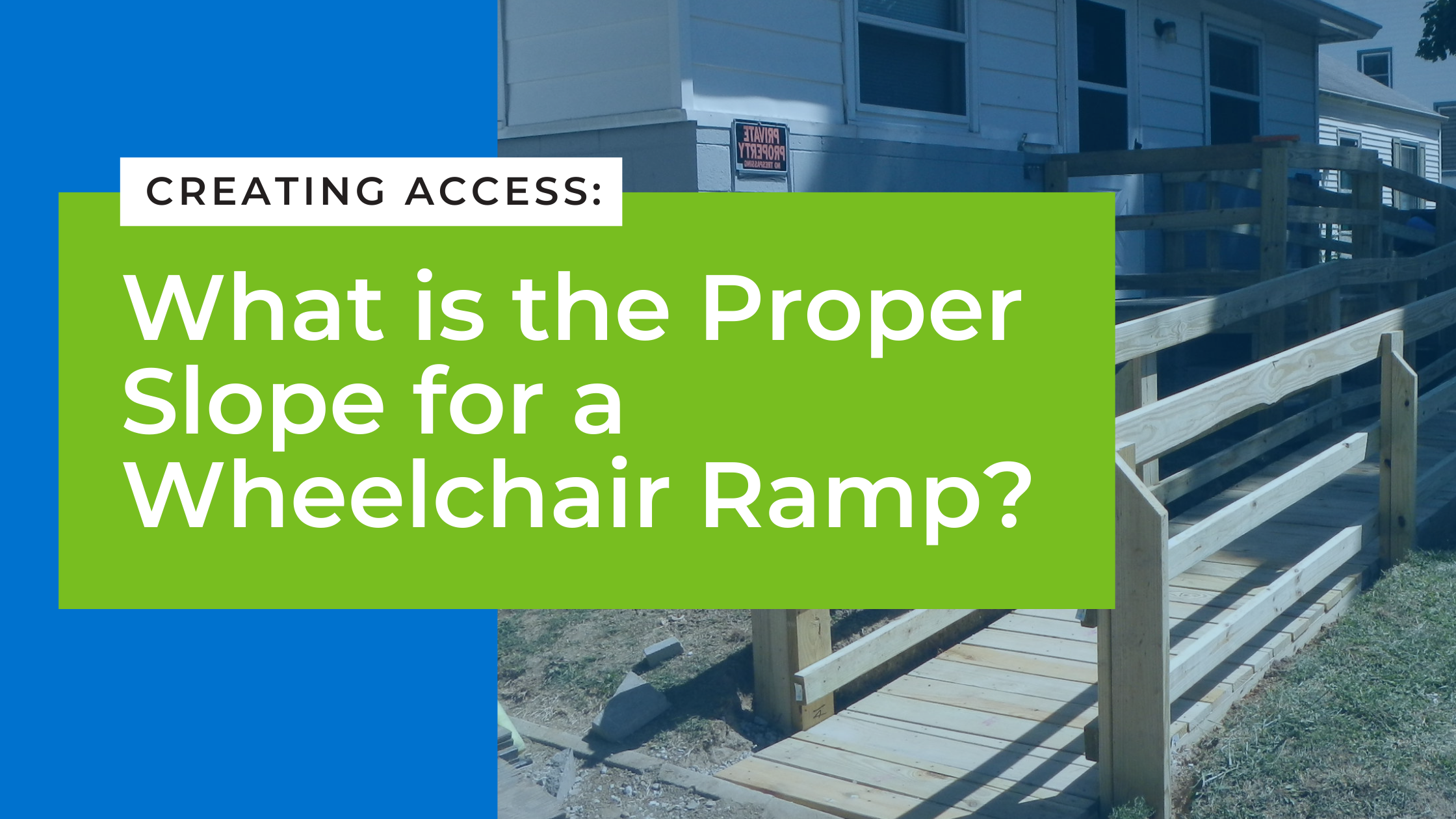When it comes to accessibility, a critical factor to consider is the slope of a wheelchair ramp. At Servants at Work (SAWs), we are dedicated to building ramps that provide safe and easy access for individuals with mobility challenges. In this blog post, we’ll explore the importance of the proper ramp slope and how SAWs ramps are designed to make a difference.
The Right Slope for a Wheelchair Ramp
The slope, or incline, of a wheelchair ramp plays a pivotal role in ensuring safe and efficient access. Ramps that are too steep can be challenging to navigate for individuals using wheelchairs, walkers, or those with limited mobility. So, what’s the proper slope for a wheelchair ramp?
According to the Americans with Disabilities Act (ADA) guidelines, the recommended maximum slope for a wheelchair ramp is 1:12, which means that for every inch of vertical rise, there should be at least 12 inches of ramp length. This slope provides a gentle incline that allows for easy and safe ascent and descent.
Why 1:12?
The 1:12 slope is based on extensive research and is considered ideal for several reasons:
- Safety: A gentler slope is safer for individuals using wheelchairs or mobility aids, as it reduces the risk of tipping over backward when ascending and provides better control when descending.
- Ease of Use: A 1:12 slope is comfortable for users, ensuring a smooth and effortless transition between different levels or surfaces.
- Compliance: Following ADA guidelines ensures compliance with accessibility regulations, reducing liability and ensuring that your ramp meets legal standards.
- Universal Design: This slope also accommodates a wide range of mobility devices, making it versatile and user-friendly.
Calculating the Length of a Ramp:
To calculate the necessary length for your wheelchair ramp, you can use a simple formula:
Ramp Length = Vertical Rise ÷ Slope (1:12)
For example, if you have a vertical rise of 24 inches, you would need a ramp that is 24 feet long (24 ÷ 12 = 2).
Considerations:
While the ADA recommends a 1:12 slope, there are situations where slight deviations may be necessary due to space constraints. In such cases, it’s crucial to consult with accessibility experts to ensure the safety and usability of the ramp. Additionally, ramps should include handrails for added safety and accessibility.
Why SAWs Ramps Excel
At SAWs, we understand the significance of adhering to these guidelines. Our volunteers and carpenters meticulously design and build ramps that meet, and often exceed, ADA standards. Here’s why SAWs ramps excel:
- Accessibility: Our ramps are carefully constructed to provide the proper slope, ensuring anyone can comfortably access their homes and community.
- Safety: Safety is paramount. We use quality materials and craftsmanship to create sturdy ramps that offer stability and peace of mind.
- Community Impact: SAWs ramps not only enhance individual lives but also foster a more inclusive and supportive community.
How You Can Get Involved
Now, here’s where you come in! If you’re passionate about making a difference in your community, consider volunteering with SAWs. We’re always in need of dedicated individuals who share our commitment to accessibility.
Volunteer with Us – Join our team of volunteers and help us build ramps that transform lives. Register here!
If you or someone you know requires a wheelchair ramp for better accessibility, don’t hesitate to reach out. SAWs is here to help.
Apply for a Ramp – If you or a loved one needs a ramp, submit an application today, and we’ll work together to provide the access you deserve. Apply here.
At Servants at Work, we believe that everyone should have the opportunity to live their lives to the fullest. With your support and involvement, we can continue to create a more accessible and inclusive world, one ramp at a time. Join us in this meaningful journey today!

